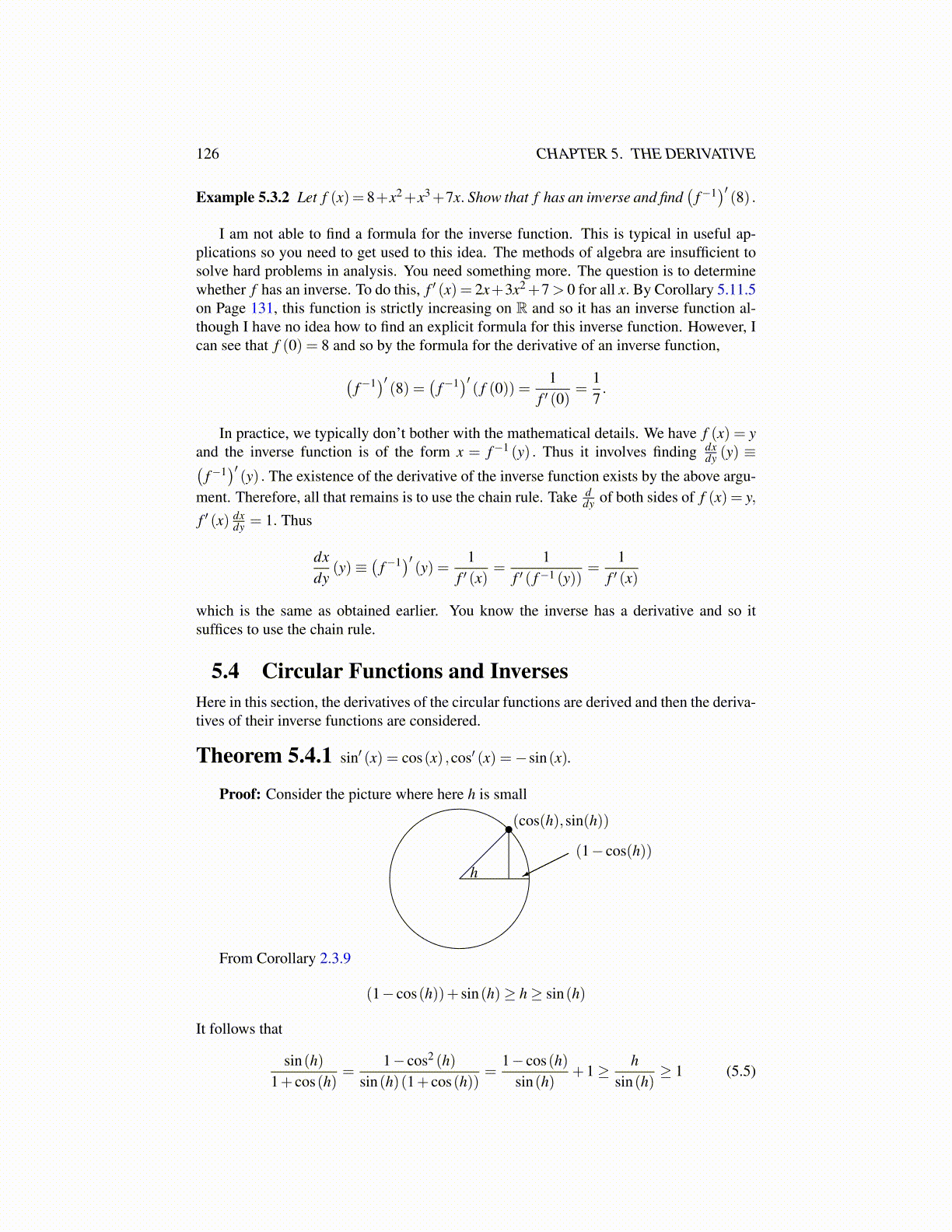
126 CHAPTER 5. THE DERIVATIVE
Example 5.3.2 Let f (x)= 8+x2+x3+7x. Show that f has an inverse and find(
f−1)′(8) .
I am not able to find a formula for the inverse function. This is typical in useful ap-plications so you need to get used to this idea. The methods of algebra are insufficient tosolve hard problems in analysis. You need something more. The question is to determinewhether f has an inverse. To do this, f ′ (x) = 2x+3x2+7 > 0 for all x. By Corollary 5.11.5on Page 139, this function is strictly increasing on R and so it has an inverse function al-though I have no idea how to find an explicit formula for this inverse function. However, Ican see that f (0) = 8 and so by the formula for the derivative of an inverse function,
(f−1)′ (8) = ( f−1)′ ( f (0)) =
1f ′ (0)
=17.
In practice, we typically don’t bother with the mathematical details. We have f (x) = yand the inverse function is of the form x = f−1 (y) . Thus it involves finding dx
dy (y) ≡(f−1)′(y) . The existence of the derivative of the inverse function exists by the above argu-
ment. Therefore, all that remains is to use the chain rule. Take ddy of both sides of f (x) = y,
f ′ (x) dxdy = 1. Thus
dxdy
(y)≡(
f−1)′ (y) = 1f ′ (x)
=1
f ′ ( f−1 (y))=
1f ′ (x)
which is the same as obtained earlier. You know the inverse has a derivative and so itsuffices to use the chain rule.
5.4 Circular Functions and InversesHere in this section, the derivatives of the circular functions are derived and then the deriva-tives of their inverse functions are considered.
Theorem 5.4.1 sin′ (x) = cos(x) ,cos′ (x) =−sin(x).
Proof: Consider the picture where here h is small
h
(cos(h),sin(h))
(1− cos(h))
From Corollary 2.3.9
(1− cos(h))+ sin(h)≥ h ≥ sin(h)
It follows that
sin(h)1+ cos(h)
=1− cos2 (h)
sin(h)(1+ cos(h))=
1− cos(h)sin(h)
+1 ≥ hsin(h)
≥ 1 (5.5)